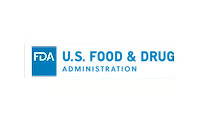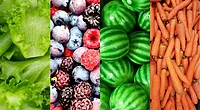Additional Interventions Needed for Fresh-cut Produce
The recent nationwide outbreak of salmonellosis associated with fresh tomatoes is another reminder of the recurring problem of foodborne illness resulting from fresh produce consumption. Recent epidemiologic studies have identified vegetables as leading vehicles of illnesses associated with outbreaks of foodborne disease. Processing and bagging vegetables and fruits does not ensure safety as at least 18 outbreaks have been attributed to fresh-cut produce consumption between 1998–2006 (Table 1).
Credit: FDA, 2006
Although public health investigators have developed more sophisticated and sensitive methods for detecting foodborne disease outbreaks, there are still major gaps in the surveillance net in identifying the source and locations of contamination of the implicated foods. In this article, we describe many of the suspected routes of pathogen contamination at both preharvest and postharvest, and discuss where additional interventions could improve the safety of fresh-cut produce.
Routes of Contamination
In the preharvest environment, animal manure and contaminated irrigation water are believed to be two primary sources of hazardous microbes in produce fields. Improper composting is often cited as a contributing factor to the pathogen contamination of compost and occurs when locations of the compost heap, such as at the surface, do not receive sufficient heat to kill harmful microbes. Holding the material for a long period of time (several weeks) or mixing the material one or more times to expose the material to thermophilic composting conditions can help ensure safety. Testing irrigation water for microbial indicators of fecal contamination has become more routine in the United States. Mitigation strategies are applied when the sanitary quality of the water, based on E. coli counts, exceeds actionable levels. Inherent to this practice is the assumption that contamination below these actionable levels is inconsequential; however, the validity of this assumption needs verification.
Many unanswered questions remain regarding the frequency of pathogen contamination and growth that occurs during rainfall or soil drenching events in produce fields, and the conditions and frequency under which pathogens are internalized in plant tissue in the field. Research to date suggests that pathogen internalization of certain vegetables and fruits may occur in the field, but survival is dependent on the plant’s developmental stage and the point of entry. For example, pathogens like Salmonella or E. coli O157:H7 can be found in sprouts germinated from contaminated seeds or in tomato fruit when stems or flowers are contaminated prior to flower setting. In contrast, pathogens internalized via roots or leaves of seedlings or mature leafy green plants persist for only a limited time.
In general, experts agree that pathogen contamination of produce growing in fields may be reduced by applying good agricultural practices (GAPs); however, it is unlikely that implementing GAPs would completely eliminate pathogen contamination of produce. Hence, it is incumbent on the produce industry to minimize opportunities for product contamination during harvesting and processing. During these operations, produce is subjected to cutting, coring, shredding, dicing and peeling, which can contribute to an increased risk of contamination by pathogens (Table 2). Not only do pathogens attach more easily to cut surfaces, but they are more likely to survive and grow due to their utilization of nutrient-rich liquid released at these sites and the interference of those juices with antimicrobial treatments. Commercially grown iceberg lettuce is frequently cut and cored in the field using a device that contains on one end a flat-edged stainless steel blade used to cut the head off near the soil surface and on the other end, a coring ring that is inserted around the stem of the lettuce head to remove the core. Studies have revealed that after the knife becomes contaminated with E. coli O157:H7 by contacting contaminated soil, the cored area of at least ten heads of lettuce can be subsequently tainted by the pathogen. Interventions are needed that prevent contamination by cutting and coring knives.

Credit: Michael P. Doyle and Marilyn C. Erickson
Another practice used in the California fresh produce industry that has recently been identified as a potential cause for concern is the use of vacuum cooling that can internalize pathogens on the surface of leafy greens. Vacuum cooling is frequently used to lower the product temperature; however, recent studies have revealed that vacuum cooling can significantly increase the infiltration of E. coli O157:H7 into lettuce tissue possibly as a result of accompanying tissue structural changes. Interventions are needed to apply before or during vacuum cooling to prevent pathogen infiltration.
Improving Produce Safety
In general, the fate of enteric pathogens on stored produce is dependent on storage temperature, relative humidity, gaseous composition of the atmosphere, nutrient availability and presence of competitive bacteria or antimicrobial compounds. Typically, most enteric pathogens can survive on produce during the time the product is in distribution. Hence, when pathogens that have a low infectious dose are present, interventions are needed that eliminate them before the product is distributed.

Credit: Michael P. Doyle and Marilyn C. Erickson
Unfortunately, approved chemical interventions available to the industry are limited in their effectiveness. The most commonly used sanitizing agent by the produce industry is chlorine; however, this disinfectant has minimal efficacy (~1-log pathogen reduction) on lettuce (Table 3). The bactericidal activity of other chemical sanitizing agents varies depending on the produce being treated and is often correlated with the physical structure of the fruit or vegetable (i.e., smooth versus rough) and the mode of delivery. For example, chlorine dioxide is more effective when applied in the gaseous form than the aqueous form. Ideally, pathogen interventions should provide at least a 5-log reduction on the treated vegetables or fruits. In addition, the intervention treatment should not change the quality characteristics of the product. For example, irradiation has been shown to be effective at reducing enteric pathogen contamination on fruits and vegetables; however, with several types of produce, product softening due to changes in pectic substances occurs with a dose of 1 kGy which is needed to kill some pathogens. Such results illustrate the challenge of attempting to find one intervention that would be equally effective for all types of produce. Hence, in the absence of having a cross-cutting intervention, we are challenged with developing food safety interventions that can not only effectively inactivate pathogens, but are also mild enough to not adversely affect the sensory qualities of fragile fresh produce items. Such treatment conditions may require multiple hurdle steps that have synergistic antimicrobial activities. As an example, irradiation dosages required for pathogen inactivation are lower if packages contain a modified atmosphere or if an antimicrobial coating is applied to the produce item prior to irradiation. Keep in mind that most chemical and biological treatments are only effective on surface contamination; hence, combination or sequential treatments involving a physical intervention may be needed if pathogens are internalized. Developing multiple-hurdle or sequential intervention treatments will likely be the most effective approach to minimizing the transmission of enteric pathogens through fresh-cut produce.
Michael Doyle is a Regents Professor of Food Microbiology and Director of the Center for Food Safety at the University of Georgia. He is an active researcher in the area of foodborne bacterial pathogens and works closely with the food industry on issues related to the microbiological safety of foods. Dr. Doyle is a graduate of the University of Wisconsin-Madison where he received his B.S. degree in Bacteriology, and M.S. and Ph.D. degrees in Food Microbiology. He can be reached at mdoyle@uga.edu.
Marilyn Erickson is an Associate Professor of Food Biochemistry within the Center for Food Safety and the Department of Food Science and Technology at the University of Georgia. She is a graduate of North Carolina State University and Oregon State University where she received her B.S. and M.S./Ph.D. degrees, respectively. Her current research interests are centered on factors affecting preharvest contamination of leafy greens and the inactivation of pathogens in animal manure-based composts. She can be reached at mericks@uga.edu.
References
1. Takeuchi, K. and J.F. Frank. 2000. Penetration of Escherichia coli O157:H7 into lettuce tissues as affected by inoculum size and temperature and the effect of chlorine treatment on cell viability. J. Food Prot. 63:434-440.
2. Li, Y., R.E. Brackett, J. Chen, and L.R. Beuchat. 2001. Survival and growth of Escherichia coli O157:H7 inoculated onto cut lettuce before or after heating in chlorinated water, followed by storage at 5° or 15°C. J. Food Prot. 64:305-309.
3. Delaquis, P., S. Stewart, S. Cazaux, and P. Toivonen. 2002. Survival and growth of Listeria monocytogenes and Escherichia coli O157:H7 in ready-to-eat lettuce washed in warm chlorinated water. J. Food Prot. 65:459-464. >
Looking for quick answers on food safety topics?
Try Ask FSM, our new smart AI search tool.
Ask FSM →








